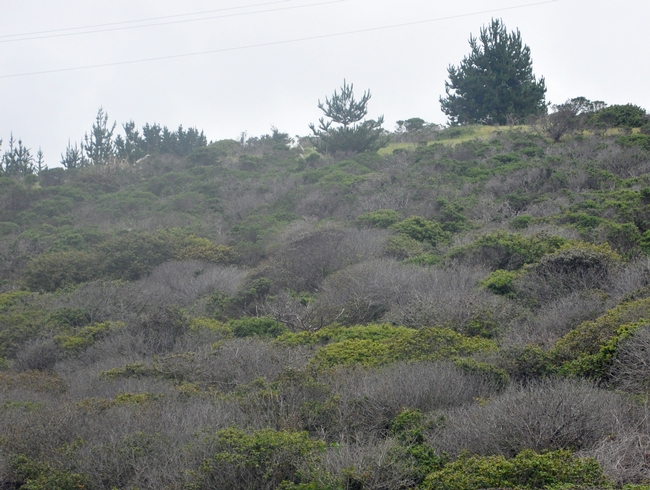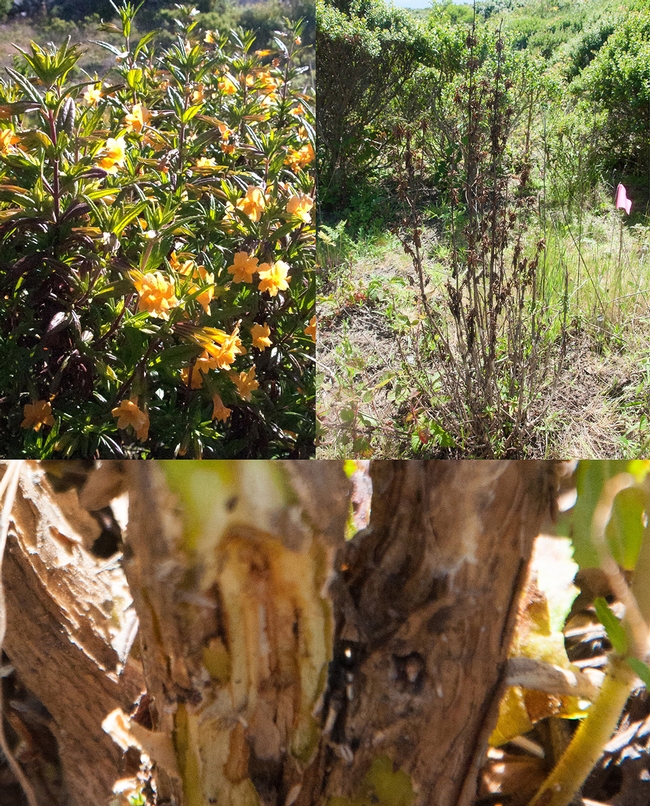
Phytophthora invasions linked to ecological restorations
Biological invasions are one of the three main causes for biodiversity loss globally, together with urbanization and climate change. Not unlike animals and plants, microbes can become invasive in non-native ecosystems. Some microbial invasions can lead to novel plant diseases with direct and detrimental effects on terrestrial ecosystems. The plant trade, both international and domestic, is thought to be a major pathway for the introduction and spread of exotic plant pathogenic microbes. Some introductions are accidental, but systematic introductions are significantly more detrimental for the integrity of natural ecosystems.
In a new study published in the journal Biological Invasions, Matteo Garbelotto, a Cooperative Extension specialist and adjunct professor in the Department of Environmental Science, Policy, and Management (ESPM), investigates whether multiple species of the plant killer genus Phytophthora—which includes the infamous Sudden Oak Death pathogen—could have been brought into natural habitats during restoration projects. Through one of the first controlled studies on the subject, Garbelotto and Laura Sims, a study co-author at Louisiana Tech University, found that plants used in restoration projects often were infected and killed by one or multiple Phytophthora species.
From surveys of control undisturbed sites near failing restorations, as well as plant production facilities providing the plant stock used in these restorations, the authors were able to conclude that these pathogens were not already present in restored habitats. Rather, they were introduced through plants or soil contaminated in the plant production facilities themselves.
The researchers tested six plant species for the presence of Phytophthora in 14 study sites across three San Francisco Bay Area counties. A statistical analysis found significantly higher percentages of Phytophthora occurrences on plants and soil in restoration sites and adjoining disturbed sites than in control undisturbed sites, where no Phytophthoras were isolated. The researchers found greater rates of disease symptoms and plant death, as well as a lack of regeneration, where Phytophthoras were present.
“All other studies so far simply reported the presence of these soil borne pathogens in restorations, but without any solid experimental evidence that they were introduced through the restoration efforts,” says Garbelotto. “In this light, the paper is transformative. The fact that Phytophthoras were found in all restoration sites studied and on multiple plant hosts shows these are not isolated occurrences, but that habitat restoration projects in the near past have repeatedly and systematically resulted in the introduction of these aggressive pathogens.” He adds that the absence of these pathogens in neighboring unrestored and undisturbed sites suggests that at least some of the species found may be exotic, and particularly deadly, for plant hosts that have not previously encountered them.
“The second key result of our study was the finding that these pathogens are spreading invasively through infested soil and water well outside the borders of restorations”, says co-author Laura Sims. “This indicates that extremely costly restoration projects, rather than restoring the integrity of the ecosystem, may further deteriorate its health, by introducing invasive plant pathogens. Historically, man has never been able to eradicate these pathogens, once they have established in natural habitats. We have shown such establishment is happening in natural habitats near the restoration sites we studied”
The study was partially conducted in the Presidio of San Francisco, a national park site. “Plantings and landscape restorations are a big part of what we do in the Presidio,” says Christa Conforti, biologist and Integrated Pest Management Specialist with the Presidio Trust. “This study shows that restorations have unwittingly introduced plant pathogens that cannot feasibly be eradicated, and that repeated introductions are particularly dangerous. This evidence justifies investing our resources to ensure we take significant precautions when using nursery-grown plants in our landscapes, to help us meet our mission of protecting biodiversity and native ecosystems into the future.”
As a faculty member in ESPM, Garbelotto researches exotic forest diseases, fungal ecology, biodiversity, geonomics, wood decay and tree stability, and the management of forest diseases. He also runs a citizen science initiative in California to find and combat the exotic disease sudden oak death (SOD), known to have decimated native oak and tanoak populations. Garbelotto was featured in Breakthroughs magazine in 2019. The lab he runs also provides diagnostic services and forensic evidence on factors leading to tree failure.
The full study, titled “Phytophthora species repeatedly introduced in Northern California through restoration projects can spread into adjacent sites,” can be found on the Biological Invasions website.
Related articles:
Coordinated response to inadvertent introduction of pathogens to California restoration areas


